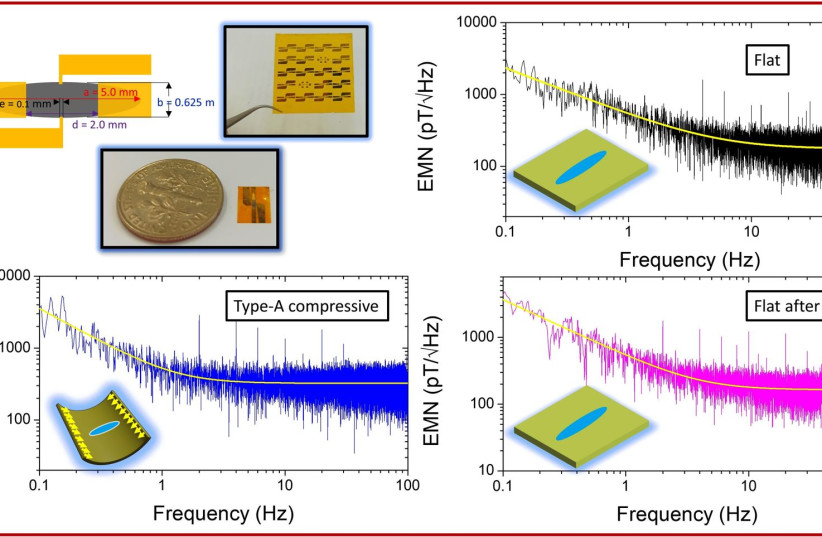Israel takes giant leap forward with magnetic sensors
The sensors can detect low-frequency magnetic fields smaller than 200 pico-Tesla, which is more than 200,000 times smaller than the earth's magnetic field.
Flexible magnetic sensors have become popular because they are versatile for a variety of uses and applications in key fields of flexible electronics – including soft robotics, consumer electronics, healthcare, vehicles and more.
They are widely utilized for tasks such as navigation, and in contactless human/machine interfaces, strain sensors and in smart skin and textiles for applications such as pressure sensing, posture monitoring and motion tracking.
These sensors are better than rigid ones because they can bend and can take the contours of a wide variety of surfaces, including those that are soft and have an irregular shape. But this advantage has come at a price, as flexible magnetic sensors are much less able to detect small magnetic fields, this limiting their potential use.
But a “giant leap of more than an order of magnitude improvement in the sensitivity of flexible magneto-resistive sensors” is now upon us, according to researchers at Bar-Ilan University (BIU) and Ben-Gurion University of the Negev (BGU).
Their study, which was co-authored by the group leaders, Dr. Nhalil, Daniel Lahav, Shai Amrusi and Moty Schultz, appears as an Editor’s Pick in the journal Applied Physics Letters, and was published under the title “Flexible planar-Hall effect sensor with sub-200 pT resolution.”

The new sensors are elliptical in shape and are grown on polyamide tape, which has excellent chemical resistance and insulation properties and is not affected by acids or oils. It also keeps electrical components at a consistent temperature, so many industries use polyimide tape to ensure their electronics don’t suddenly combust or fall below the required temperature.
How sensitive are the new sensors?
The sensors can detect low-frequency magnetic fields smaller than 200 pico-Tesla, which is more than 200,000 times less than the earth’s magnetic field.
“These values are not only the best among all types of flexible magnetic sensors reported to date, they also surpass those of many rigid counterparts,” explained Prof. Lior Klein, of BIU’s physics department who led the research with Dr. Asaf Grosz of BGU’s electrical and computer engineering department. “Their unprecedented sensitivity, which is accompanied by simple design, low cost and remarkable flexibility, make these sensors particularly attractive for being integrated in the next generation of flexible electronic devices.”



No comments:
Post a Comment